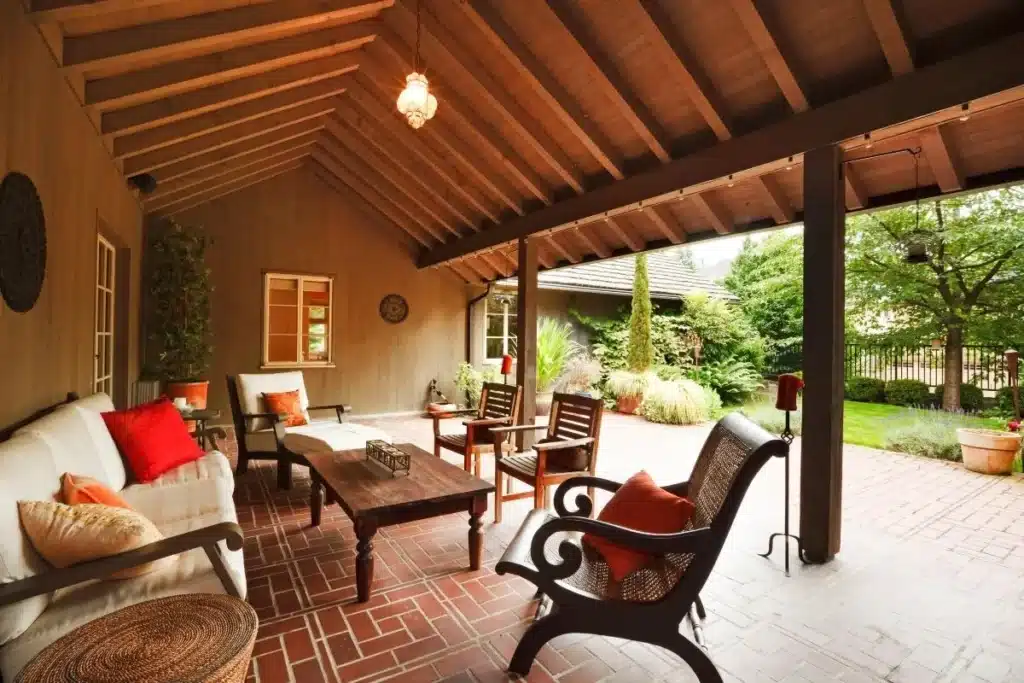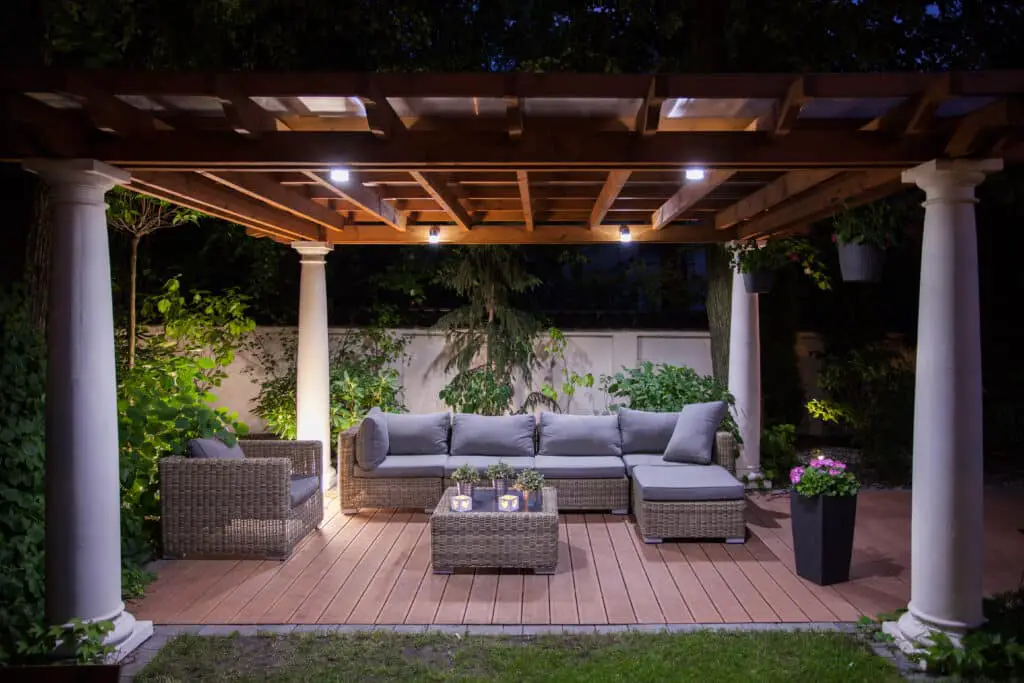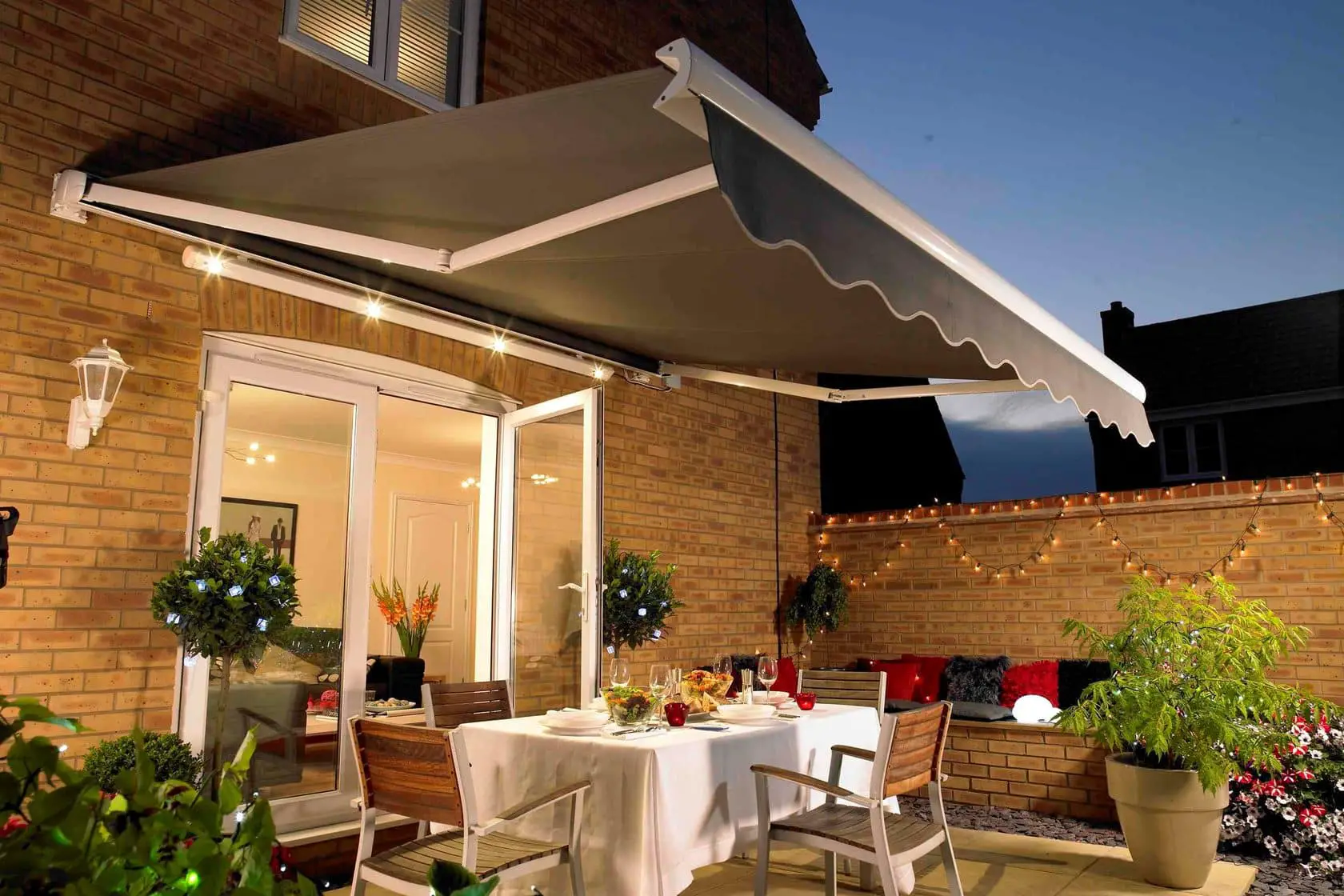How To Cover Patio From Rain
Introduction
How To Cover Patio From Rain: One option to consider is installing a retractable awning. A retractable awning is a versatile and practical solution that provides shade and protection from rain. With the ability to extend and retract the awning as needed, you can easily adjust the coverage depending on the weather conditions. This allows you to enjoy your patio during light rain showers or provide complete coverage during heavy downpours. Retractable awnings come in various sizes, styles, and materials, so you can choose the one that best suits your patio’s design and your personal preferences.
If you’re looking for a more permanent solution, a patio cover might be the answer. Patio cushions covers are structures that are attached to your home and provide a solid roof over your patio. They can be made from different materials such as wood, aluminum, or vinyl, and come in a variety of styles and designs. Patio covers not only protect your outdoor space from rain but also provide shade from the sun’s harsh rays. They can be customized to match your home’s architecture and can even be equipped with additional features like ceiling fans or lighting.
Another option to consider is a pergola with a retractable canopy. A pergola is a freestanding structure that adds beauty and elegance to your patio. By adding a retractable canopy to the pergola, you can create a covered area that protects you from rain while still allowing natural light and airflow. Pergolas with retractable canopies are a popular choice for those who want a stylish and functional solution for their patio. They can be made from different materials like wood or metal and can be customized to fit your patio’s size and style.

How do I cover my patio when it rains?
When it comes to enjoying your patio, rain can often put a damper on your plans. However, there are several options available to help you cover your patio when it rains, allowing you to continue enjoying your outdoor space even during inclement weather.
One option is to install a retractable awning over your patio. These awnings can be extended or retracted as needed, providing shade and protection from the rain when necessary. They are typically made of durable materials that can withstand various weather conditions, ensuring that your patio remains dry and comfortable.
Another option is to install a permanent roof or cover over your patio. This can be done using materials such as metal, wood, or even polycarbonate panels. A permanent roof provides a more permanent solution to covering your patio when it rains, offering long-term protection from the elements.
If you prefer a more flexible option, you can consider using a patio umbrella or a canopy. These can be easily set up and taken down as needed, allowing you to quickly cover your patio when it starts to rain. Patio umbrellas are available in various sizes and styles, allowing you to choose one that fits your patio and personal preferences.
Additionally, you can also consider using outdoor curtains or shades to cover your patio when it rains. These can be hung from a pergola or other structure, providing both protection from the rain and privacy. Outdoor curtains and shades are available in a variety of colors and materials, allowing you to customize the look of your patio while also keeping it dry.
How do you temporarily cover a patio?
There are several ways to temporarily cover a patio, depending on your specific needs and preferences. Whether you want to protect your patio from the elements, create shade, or add privacy, there are various options available that can be easily installed and removed as needed.
One option is to use a patio umbrella or canopy. These can be easily set up and provide instant shade and protection from the sun. Patio umbrellas come in various sizes and styles, allowing you to choose one that fits your patio space and aesthetic. Canopies, on the other hand, are larger and can cover a larger area of your patio. They are often made of durable materials that can withstand different weather conditions.
Another option is to use outdoor curtains or blinds. These can be hung from a rod or attached to the patio structure to create privacy and block out the sun. Outdoor curtains are available in different colors and patterns, allowing you to add a decorative touch to your patio. Blinds, on the other hand, provide a more adjustable option, allowing you to control the amount of light and privacy you want.
If you want a more permanent solution, you can consider installing a temporary roof or awning. These can be made of materials such as canvas or metal and can be attached to the patio structure or freestanding. A temporary roof or awning can provide full coverage for your patio, protecting it from rain, snow, and excessive sunlight. They can also be customized to fit the size and shape of your patio.
How can I cover my patio cheaply?
There are several ways to cover your patio on a budget. Whether you want to create a shaded area for relaxation or protect your outdoor furniture from the elements, there are affordable options available. By being creative and resourceful, you can transform your patio into a comfortable and inviting space without breaking the bank.
One cost-effective option is to use outdoor curtains or drapes to cover your patio. These can be hung from a rod or wire and provide both shade and privacy. Outdoor curtains come in a variety of colors and patterns, allowing you to customize the look of your patio. They are also easy to install and can be taken down and stored when not in use.
Another inexpensive way to cover your patio is to use shade sails or canopies. These are large pieces of fabric that are stretched between posts or anchored to the side of your house. Shade sails come in different shapes and sizes, allowing you to create a unique and stylish look for your patio. They provide protection from the sun and can be easily removed or adjusted as needed.
If you prefer a more natural and rustic look, consider using bamboo or reed fencing to cover your patio. These materials are affordable and can be easily attached to existing structures or posts. Bamboo and reed fencing provide both shade and privacy, while adding a touch of tropical charm to your outdoor space.
For a budget-friendly option that requires minimal installation, consider using outdoor umbrellas or parasols. These can be easily moved and adjusted to provide shade where you need it most. Outdoor umbrellas come in a variety of sizes and styles, allowing you to find one that fits your patio’s aesthetic.
What is the best material to cover a patio?
When it comes to covering a patio, choosing the right material is crucial. The material you choose will not only affect the overall look and feel of your patio, but also its durability and maintenance requirements. With so many options available, it can be overwhelming to decide which material is the best fit for your patio. However, by considering factors such as climate, budget, and personal preferences, you can make an informed decision.
One of the most popular materials for patio covers is wood. Wood offers a natural and timeless look that can complement any outdoor space. It is also relatively affordable compared to other materials. However, wood requires regular maintenance to prevent rotting, warping, and fading. It may need to be stained or painted every few years to maintain its appearance. Additionally, wood is not as durable as some other materials and may be prone to damage from weather conditions such as rain and sun exposure.
If you are looking for a low-maintenance option, aluminum patio covers may be the best choice for you. Aluminum is lightweight, durable, and resistant to rust and corrosion. It requires minimal upkeep and can withstand various weather conditions without deteriorating. Aluminum patio covers are available in a variety of styles and colors, allowing you to customize the look of your patio. However, aluminum covers may not provide as much insulation as other materials, and they can be noisy during heavy rain or hailstorms.
What do you put on an uncovered patio?
An uncovered patio can be a great addition to any outdoor space, providing a versatile area for relaxation, entertainment, and dining. However, without proper protection, an uncovered patio can be exposed to the elements, making it less enjoyable and potentially damaging to furniture and other items. To make the most of your uncovered patio, there are several things you can put on it to enhance its functionality and aesthetics.
1. Patio Furniture: One of the first things you should consider putting on an uncovered patio is patio furniture. This will not only provide a comfortable seating area but also help define the space and make it more inviting. Choose furniture that is weather-resistant and durable, such as aluminum or teak, to ensure it can withstand exposure to sun, rain, and other elements.
2. Outdoor Rug: Adding an outdoor rug to your uncovered patio can instantly transform the space and make it feel more cozy and inviting. Look for a rug made from materials that are designed to withstand outdoor conditions, such as polypropylene or synthetic fibers. Opt for a rug that complements your patio furniture and adds a pop of color or pattern to the space.
3. Shade Solutions: Since an uncovered patio is exposed to the sun, it’s important to provide shade to make it more comfortable, especially during hot summer months. There are several shade solutions you can consider, such as a patio umbrella, retractable awning, or shade sail. These options will not only provide relief from the sun but also add a decorative element to your patio.
Are there any specific materials or products that can be used to cover a patio from rain?
Yes, there are specific materials and products that can be used to cover a patio from rain. One popular option is to use polycarbonate or acrylic panels for a roof or awning. These materials are lightweight, durable, and provide excellent protection from rain. Another option is to use waterproof fabric or canvas for retractable awnings or canopies. These materials are designed to repel water and keep the patio dry.
For patio umbrellas or shade sails, you can choose materials such as polyester or vinyl that are treated with waterproof coatings. These materials are resistant to water and can effectively shield the patio from rain. When it comes to waterproof curtains or screens, you can opt for materials like PVC or polyester that are specifically designed to withstand rain and moisture.
Are there any DIY methods or solutions for creating a rain cover for a patio?
Yes, there are several DIY methods and solutions for creating a rain cover for a patio. One option is to use a tarp or waterproof fabric to create a temporary cover. This can be secured to the patio structure with bungee cords or ropes, providing a quick and easy solution for protecting the patio from rain. Another DIY option is to build a pergola or awning over the patio. This can be constructed using wood or metal beams and covered with a waterproof material such as polycarbonate sheets or canvas. This not only provides protection from rain but also adds a stylish and functional element to the patio.
When creating a DIY rain cover for a patio, it is important to consider the slope and drainage of the cover. The cover should be angled slightly to allow rainwater to run off and not accumulate on the surface. Additionally, it is important to ensure that the materials used are durable and able to withstand heavy rain. Using treated or weather-resistant wood, as well as waterproof fabrics, can help to ensure the longevity and effectiveness of the DIY rain cover. Regular maintenance and inspections should also be conducted to identify any potential issues and make necessary repairs or adjustments.
How can one ensure that a patio cover is durable and able to withstand heavy rain?
There are various elements to consider when choosing a patio cover that can endure severe rain. First, the cover’s material determines its durability. Choose water-resistant materials like aluminum, polycarbonate, or fiberglass for outdoor use. Strength and weather resistance are hallmarks of these materials.
In addition to material, patio cover design and construction are significant. The cover must be securely fastened to the patio structure. This will avoid damage or collapse in heavy rain or winds. Additional support beams or braces can strengthen the cover.
Another important part of patio cover lifespan is regular maintenance. Water won’t pool and damage the cover if you clean it regularly and remove leaves and debris. Checking the cover for wear and damage and fixing it quickly will help it last.
Are there any additional considerations or factors to keep in mind when covering a patio from rain?
When covering a patio from rain, there are several additional considerations and factors to keep in mind to ensure the effectiveness and longevity of the cover. Firstly, it is important to consider the slope or pitch of the cover. A proper slope will allow rainwater to easily drain off the cover, preventing any pooling or water damage. Additionally, the material used for the cover should be waterproof and able to withstand heavy rain. This will ensure that the patio remains dry and protected even during intense rainfall.
Another important factor to consider is the size and design of the cover. It should be large enough to adequately protect the entire patio area, including any furniture or outdoor appliances. The design should also take into account any potential wind or storm conditions, as a sturdy and well-anchored cover will be able to withstand strong gusts and prevent it from being blown away.

Conclusion
When it comes to enjoying your patio, rain can often put a damper on your plans. However, there are several effective ways to cover your patio and protect it from rain. By implementing these strategies, you can ensure that your patio remains a comfortable and enjoyable space, regardless of the weather.
One option for covering your patio cover from rain is to install a retractable awning. These awnings can be extended or retracted as needed, providing you with the flexibility to enjoy your patio in any weather. When it’s raining, simply extend the awning to create a dry and sheltered space. On sunny days, you can retract the awning to let in the sunshine. Retractable awnings come in a variety of styles and sizes, allowing you to choose the one that best suits your patio and personal preferences.
Another option for covering your patio is to use a pergola. A pergola is a structure that features an open roof, typically made of wooden beams or lattice. While a pergola doesn’t provide complete protection from rain, it can offer some coverage and create a cozy atmosphere on your patio. You can also add a retractable canopy or curtains to your pergola for additional rain protection. Pergolas are a popular choice for those who want to add a touch of elegance and style to their outdoor space.
If you’re looking for a more permanent solution, consider installing a patio cover. Patio covers are typically made of durable materials such as aluminum or wood, and they provide complete protection from rain. They can be attached to your home or freestanding, depending on your preferences. Patio covers come in a variety of styles, including solid roofs and lattice designs. With a patio cover, you can enjoy your patio year-round, regardless of the weather.








